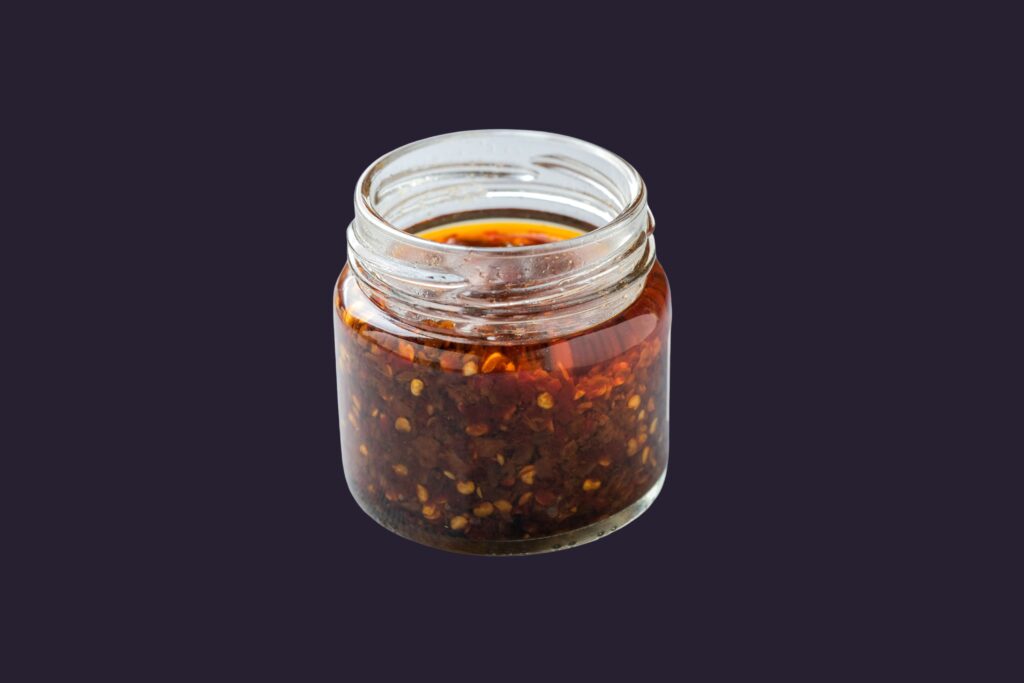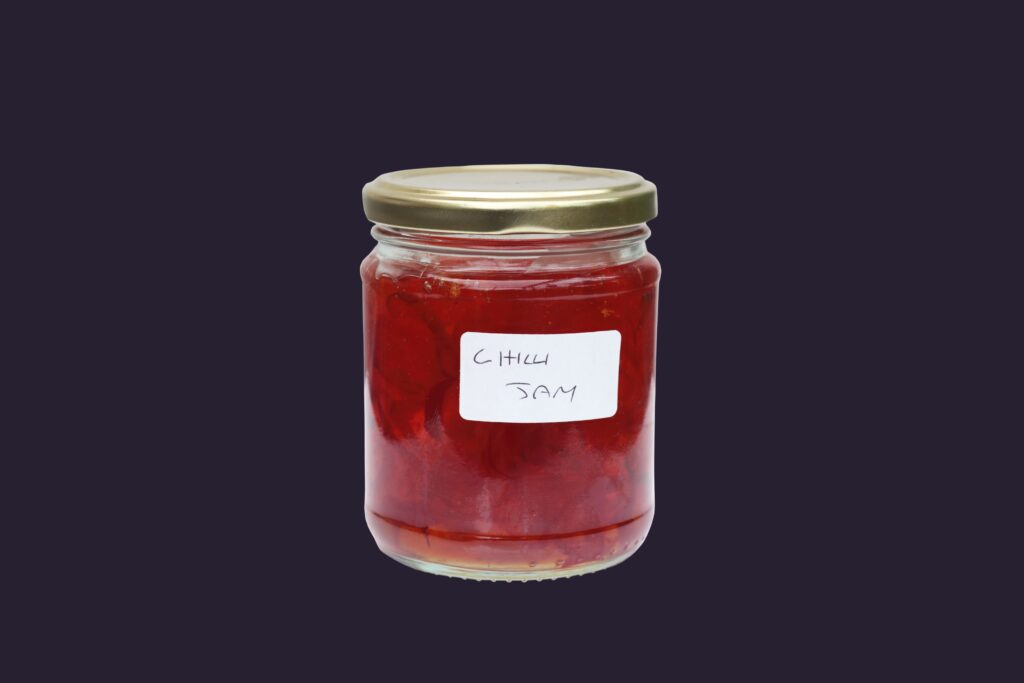It’s a peculiarly modern predicament: the forgotten bag of chillies lurking in the bottom of your fridge’s vegetable drawer, purchased with ambitious plans for a homemade curry, or perhaps delivered unexpectedly in your weekly veg box. Maybe you’ve been overzealous at the greengrocer’s, seduced by those vibrant reds and greens, or your homegrown plants have proved surprisingly prolific.
Whatever the cause, there’s no need to let these fiery fruits go to waste. Here’s our favourite ways to preserve and transform your chilli abundance; our 8 ideal solutions for using up that glut of chillies.
Chilli Oil
Perhaps the most versatile way to preserve your chilli bounty is in oil form, creating a condiment that’s equally at home drizzled over pizza as it is enriching a bowl of ramen or jazzing up your brunch eggs. The technique couldn’t be simpler, though there are a few crucial steps to ensure both safety and the best possible flavour.
First, thoroughly dry your chillies (a mix of varieties works wonderfully here) in a low oven – around 120°C – for about an hour until they’re completely moisture-free but not burnt. Roughly chop them, including the seeds if you’re feeling brave, and combine with neutral oil (groundnut or sunflower work perfectly) in a pan.
Warm gently for around 20 minutes, never letting the oil get too hot – it should barely shimmer. Remove from the heat and allow to cool completely before storing in sterilised bottles. For extra complexity, add Szechuan peppercorns, star anise, or garlic to the mix.

Fermented Hot Sauce
If you’re looking to create something with a bit more complexity – think artisanal hot sauce rather than straight-up heat – fermenting your chillies is the way forward. The process not only preserves your chillis but creates layers of funky, complex flavour that simply can’t be replicated any other way.
For a basic fermented hot sauce, roughly chop your chillies (about 500g), add 2% of their weight in fine sea salt, and pack into a sterilised jar. Cover with a 2% salt brine solution, ensuring everything stays submerged (a small zip-lock bag filled with water makes an excellent weight). Leave at room temperature for at least a week, ‘burping’ daily to release any built-up gases.
Once the fermentation has reached your desired level of funkiness, blend the lot with a splash of vinegar, strain if you prefer a smoother sauce, and bottle. The result is a gorgeously complex condiment that will keep practically indefinitely in the fridge. Alternatively, a set of these bottles makes gorgeous, thoughtful chilli gifts.
Chilli Honey
This simple infusion has become something of a cult condiment in recent years, and with good reason. It’s brilliant drizzled over pizza (particularly if there’s some good nduja involved), magnificent with fried chicken, and even works wonderfully in cocktails – a spicy margarita, anyone?
Simply slice fresh chillies (red varieties work best visually, but use whatever you have) and pack them into a jar of runny honey. The natural preservative qualities of honey mean there’s no need to worry about sterilisation here. Leave for at least a week before using, though the heat will continue to develop over time. A sprig of thyme makes a wonderful addition if you’re feeling fancy.
Chilli Jam
Ideal for slathering on cheeses and charcuterie, glazing meats, or even adding a fiery kick to your morning eggs on toast. To make a batch of chilli jam, start by blitzing 500g of fresh chillies (red chillies work best for their vibrant colour) in a food processor until finely chopped. Combine the chillies with 1kg of jam sugar, 500ml of cider vinegar, and a couple of finely chopped red peppers in a large, heavy-bottomed pan.
Heat gently to dissolve the sugar, then bring to a rolling boil and cook for around 10-15 minutes, stirring regularly, until the mixture reaches a jam-like consistency. Spoon a little onto a cold plate to test – if it wrinkles slightly when pushed with your finger, it’s ready. Transfer the hot jam into sterilised jars, seal, and leave to cool.

Dried Chilli Flakes
Perhaps the most straightforward preservation method, but one that yields incredibly useful results. Your home-dried chilli flakes will put shop-bought versions to shame, and you can create different blends using various chilli varieties for different heat levels and flavour profiles.
Thread your chillis onto string, ensuring they don’t touch each other, and hang in a warm, dry, well-ventilated spot until completely dessicated – this usually takes about two weeks. Alternatively, dry them in a low oven (around 100°C) for several hours until completely crisp.
Once dried, grind them to your preferred consistency in a spice grinder or pestle and mortar. Store in an airtight jar away from direct sunlight, and you’ll have punchy chilli flakes on hand whenever you need them.
Pickled Chillies
A jar of pickled chillies in the fridge is culinary gold dust – perfect for adding heat and acidity to sandwiches, tacos, or any dish that needs a bit of punch. The pickling process mellows the chillis’ raw heat while adding a beautiful tang that works particularly well with fatty or rich dishes.
Slice your chillies into rings (wear gloves for this job – trust us), pack into sterilised jars, and cover with a pickling liquid made from equal parts white wine vinegar and water, plus a tablespoon of salt and sugar per cup of liquid. Add whole spices like coriander seeds, black peppercorns, and perhaps a bay leaf for extra flavour. Bring the pickling liquid to a boil, pour over the chillies, seal, and leave to cool.
These will keep in the fridge for months, though they’re at their crisp best within the first few weeks.

Freeze-Dried Powder
For those lucky enough to own a dehydrator (or willing to experiment with their oven’s lowest setting), creating your own chilli powder opens up a world of possibility. Unlike shop-bought versions, your homemade powder will have vivid flavour notes specific to the varieties you’ve used, making it perfect for creating your own spice blends.
Remove the stalks from your chillies and slice them lengthways. Arrange on dehydrator trays (or oven racks lined with parchment) and dry at 50°C for 12-24 hours until completely brittle. Grind to a fine powder in a spice grinder, working in small batches to ensure an even consistency.
Store in an airtight container away from light and moisture. This powder is brilliant in dry rubs, marinades, or anywhere you’d use regular chilli powder – just remember it’s likely to be significantly more potent than commercial versions.
Chilli Paste
A concentrated chilli paste is perhaps the most versatile preservation method of all, sitting somewhere between a sauce and a powder in terms of consistency. It’s perfect for adding to stir-fries, marinades, or any dish where you want intense chilli flavour without additional liquid.
Roughly chop about 500g of chillies and blitz in a food processor with a generous pinch of salt until finely chopped. Heat a couple of tablespoons of neutral oil in a wide pan, add the chilli mixture and cook over medium-low heat, stirring regularly, until most of the moisture has evaporated and the paste is thick and glossy – this usually takes about 30 minutes. Cool completely before transferring to sterilised jars and covering with a thin layer of oil. This will keep in the fridge for several months, developing more complexity over time.

With these preservation methods in your arsenal, you’ll never need to let another chilli go to waste. And who knows? You might find yourself deliberately over-buying just to make these condiments. We certainly won’t judge.Next up, we give the same treatment to onions. Join us.
